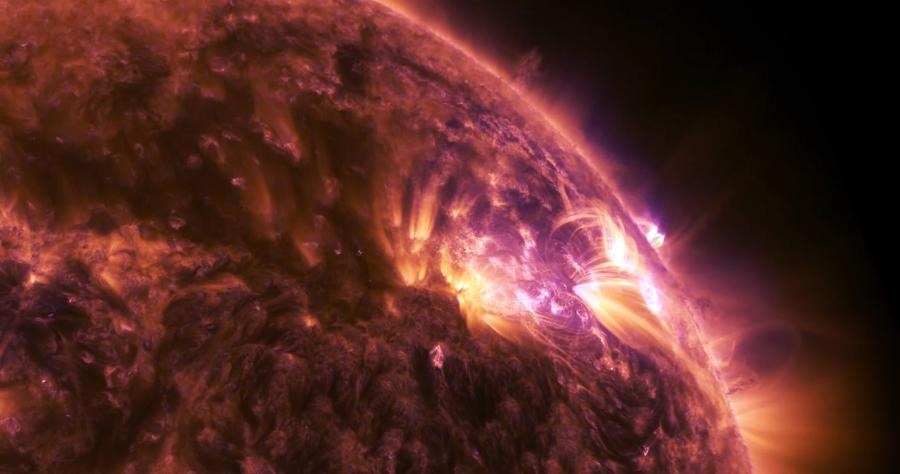Jul 31 2019
Magnetic space storms are unleashed when high-energy shock waves induced by solar flares as well as coronal mass ejections of plasma from the sun erupt all through the solar system. These storms can blackout power grids on Earth, damage satellites, and disrupt cell phone service.
 NASA-recorded solar flare. (Image credit: NASA)
NASA-recorded solar flare. (Image credit: NASA)
These high-energy waves are also driven by the solar wind—plasma that continuously flows from the sun and strikes the protective magnetic field of the Earth.
Currently, experiments performed by scientists from the U.S. Department of Energy’s (DOE) Princeton Plasma Physics Laboratory (PPPL) in the Princeton Center for Heliophysics have, for the first time, replicated the process underlying the source of such shocks. The study outcomes bridge the gap between spacecraft and laboratory observations and improve the understanding of the way the universe works.
Sudden Jumps
The experiments, published in Physical Review Letters, reveal how the interaction of plasma—the state of matter formed of atomic nuclei (or ions) and free electrons—can lead to unexpected jumps in magnetic field strength and plasma pressure that can increase the speed of the particles close to the speed of light.
Shocks such as these are “collisionless” since they are caused by the interaction of plasma particles and waves and not by collisions between the particles themselves.
As part of the study, measurement of the complete run-up to shocks was taken.
Direct measurement is an elegant way to see how the particles are moving and interacting. Our paper shows that we can employ a powerful diagnostic to study the particle motions that lead to shocks.
Derek Schaeffer, Physicist, PPPL and Princeton University
Schaeffer led the research, performed on the Omega laser facility at the University of Rochester, which synthesized a laser-driven plasma—known as a “piston” plasma—that expanded at the supersonic rate of over one million miles an hour via a pre-existing ambient plasma.
Through the expansion, the ions in the ambient plasma were accelerated to speeds of approximately half-a-million miles an hour, replicating the forerunner to collisionless shocks that take place through the entire cosmos.
The study unraveled in various stages:
- Initially, synthesis of the piston plasma replicated the supersonic plasmas formed in outer space. The piston functioned similar to a snowplow, sweeping up ions in the ambient plasma integrated into a magnetic field.
- With more of the ions being swept up, they formed a barrier that prevented the piston from functioning further. “Once you’ve piled up enough ‘snow’, the shock decouples from the piston,” stated Schaeffer.
- The stalled piston transferred the shock formation to the highly compressed magnetized plasma, leading to the sudden collisionless jump.
Scientists tracked these developments by employing a diagnostic known as Thompson scattering. It involves detecting laser light scattered from the electrons in the plasma, allowing measurement of the density and temperature of the electrons as well as the speed of the ions that flow.
According to the researchers, the study outcomes reveal that laboratory experiments can investigate the behavior of plasma particles in the precursor to collisionless astrophysical shocks, “and can complement, and in some cases overcome the limitations of similar measurements undertaken by spacecraft missions.”
Ultimate Goal
Although the study replicated the process that triggers the shocks, the ultimate objective is to measure the shock-accelerated particles themselves. For that step, stated Schaeffer, “the same diagnostic can be used once we develop the capability to drive strong enough shocks. As a bonus,” he added, “this diagnostic is similar to how spacecraft measure particle motions in space shocks, so future results can be directly compared.”
Scientists from PPPL, the University of Rochester, the University of Michigan, the Massachusetts Institute of Technology (MIT), and the University of New Hampshire collaborated on this study.
This study was supported by the DOE Office of Science with simulations performed on the Titan supercomputer at the Oak Ridge Leadership Computing Facility, a DOE Office of Science user facility at the Oak Ridge National Laboratory.